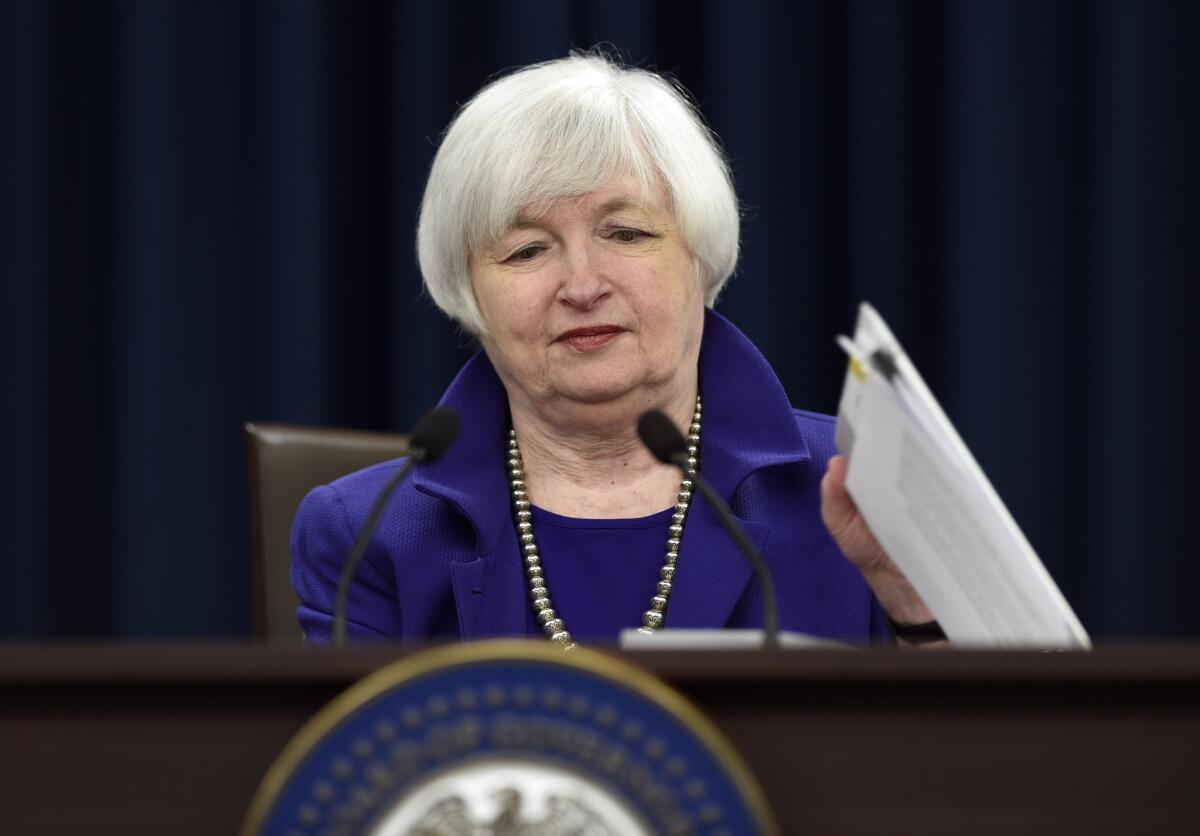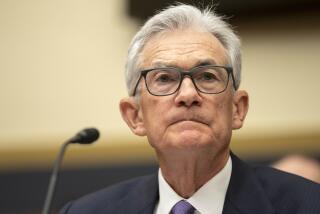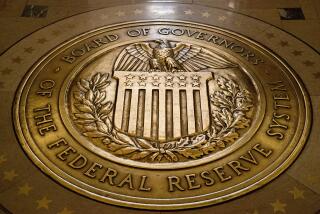Fed’s rate hike was a ‘close call’ for some policymakers, meeting minutes show

Federal Reserve Chairwoman Janet L. Yellen after holding a news conference in Washington on Dec. 16.
The Federal Reserve’s decision to raise a key interest rate last month for the first time in nearly a decade was a “close call” for some policymakers, who were concerned that inflation remained well below the central bank’s desired level, according to minutes of their meeting released Wednesday.
Although the vote to nudge up the benchmark rate by a quarter of a percentage point was unanimous, Fed officials expressed concerns during their Dec. 15-16 meeting about the risks still facing the recovery from the Great Recession.
Some members worried that further declines in the price of oil and other commodities or a rise in the value of the dollar could continue to keep inflation too low, the minutes said.
And although there was broad agreement the labor market had improved significantly last year, some policymakers worried that the gains weren’t enough to offset downward price pressures from slowing economies around the world.
Join the conversation on Facebook >>
Ultimately, members of the policymaking Federal Open Market Committee decided to enact the long-awaited rate hike because they believed the recovery had improved enough in recent months and that the Fed needed to act because it takes time for monetary policy decisions to filter through the economy, according to the minutes.
Fed officials had lowered the so-called federal funds rate, a benchmark for many short-term consumer and business loans, to near zero in December 2008 to try to stimulate economic growth during the financial crisis and Great Recession.
The rate stayed at the unprecedented low level longer than economists had expected. And with the unemployment rate falling and job creation accelerating last year, pressure began building on Fed Chairwoman Janet L. Yellen and her colleagues to start raising the rate toward normal levels.
NEWSLETTER: Get the day’s top headlines from Times Editor Davan Maharaj >>
But inflation continued to run well below the Fed’s 2% annual target even as more people went back to work and wages began rising. Low inflation can hinder economic growth and a rate hike would be expected to push prices down because it costs more to borrow.
Although Fed policymakers attributed the continued low inflation to falling oil prices, some members at the December meeting worried that there were “considerable” risks to their expectation that inflation would start rising and “emphasized the need to monitor the progress of inflation closely.”
Fed policymakers agreed to publicly say that they expected to raise rates only gradually and be prepared to alter that approach if economic conditions warranted.
“Members stressed the potential need to accelerate or slow the pace of normalization as the economic outlook evolved,” the minutes said.
In their economic projections, a majority of the Fed’s 17 policymakers anticipated four additional 0.25 percentage point increases this year. That would put the rate at a still-low 1.375% by the end of 2016.
Fed Vice Chairman Stanley Fischer told CNBC on Wednesday that the potential for four hikes this year was “in the ballpark” but subject to change based on economic conditions.
“The reason we meet eight times a year is because things happen and as they happen you want to adjust your policy,” Fischer said. “We have to react to incoming events and we will react to them.
Follow @JimPuzzanghera on Twitter
MORE BUSINESS NEWS
Private-sector hiring accelerated in December to 257,000, ADP says
Chipotle is subpoenaed in criminal probe tied to norovirus in Simi Valley
U.S. stocks sink on North Korean bomb claim and China economic worries







